Culprit Covert Op Cockpit System
Another day another handlebar! Seems like there’s a lot of handlebar activity these days, and for good reason. The aerobar – and the bicycle handlebar in general – is probably the least developed product on the bicycle. In recent weeks we’ve written about the Speedbar and LOOK’s new Aergo. We write a lot about how Profile Design is leading the pack in general, and we’ll be writing about Zipp and Vision quite soon.
Today, it’s the Culprit, which you can order via Culprit’s Indiegogo campaign. The bar as you see it here will cost you $333 and that buys you the aerobar, the extensions and the stem. It’s a nice way to clean up your un-superbike.

Let’s start with Culprit’s stem. Not going to win the weightweenie award but I’ve seen heavier. A little extra weight is the price you pay for all that space inside for cables, wires, junction boxes. If you look at this stem you’ll see it consists of 3 basic pieces: the lower half, the back half of the top, and then the upper stem clamp, Imagine a faceplate on your stem, except instead of it fronting the stem it’s atop the stem. (The top rear plate is off in the image above.)
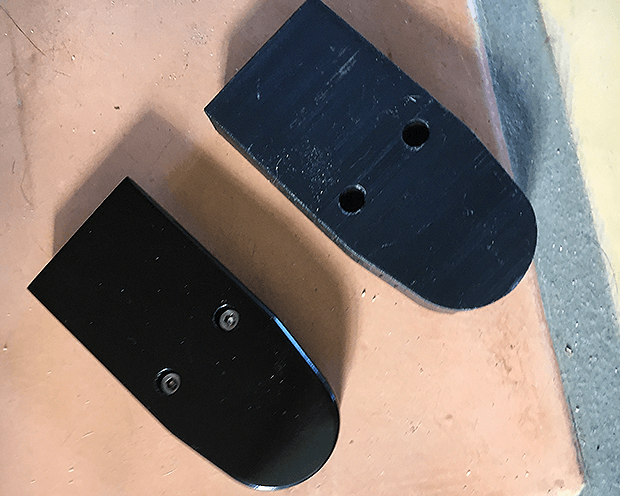
I got this aerobar with a second stem top piece that was 3D printed, and I suspect this will become a composite piece that removes some weight from the assembly. It’s not a structural part of the stem, so why not?
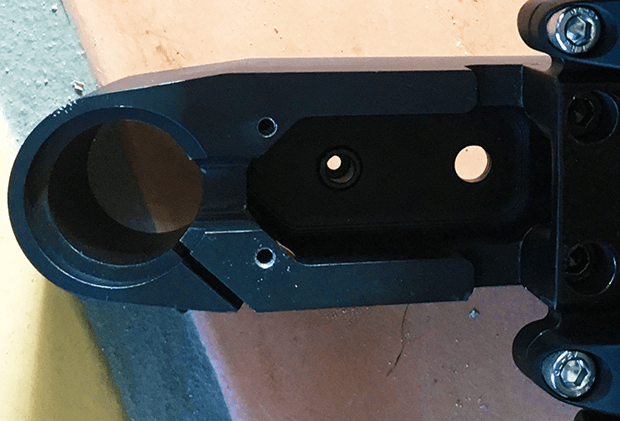
Inside the stem thought is given to internal routing, a cable housing stop for a centerpull front brake (like the TriRig) and other ingenious or at least utilitarian features.
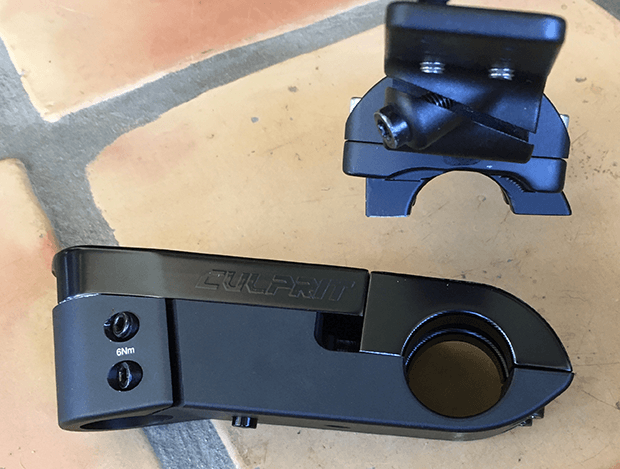
If you take off the stem clamp piece you can replace it with the bracket that is the foundation of the aerobar. One reason the stem needs to be a little more robust is that it must accept this piece and all the stress that goes with it.
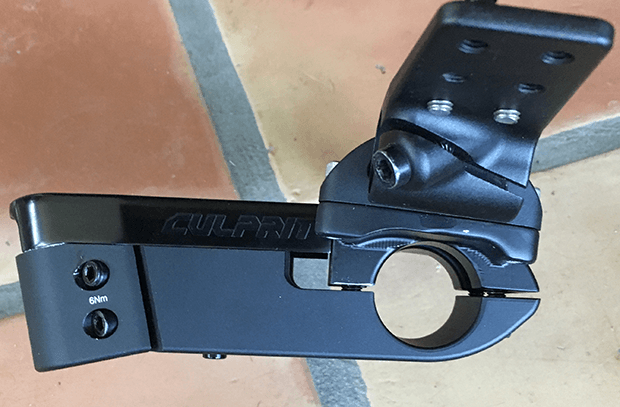
Screw down the bolts that attached the stem “faceplate” and you now have a complete aerobar bracket system.
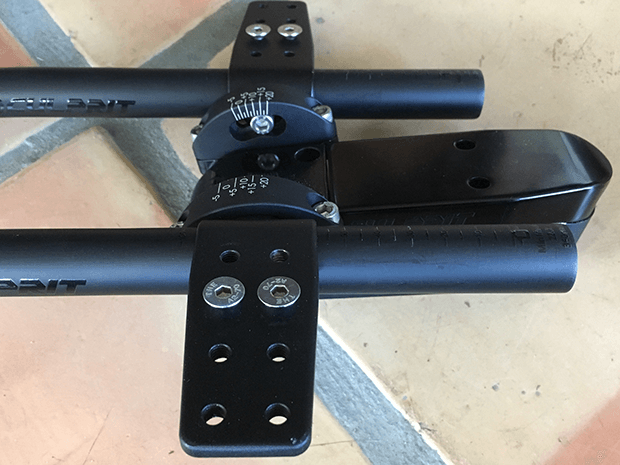
If you look at the image above, the aerobar starts to take shape. Here the extensions have been attached, and you can see where the armrests mount. You can also see that there’s rotation built into this aerobar system.
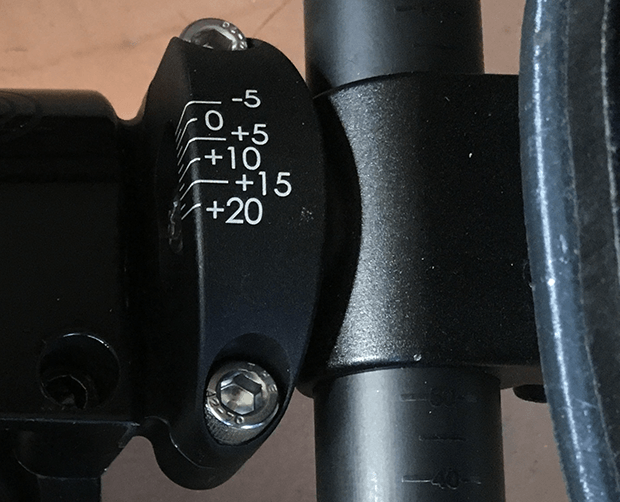
What’s typical of Culprit is to note the features that currently animate the user community and deliver them in a cost-effective way. Here you can see that aerobar + pad tilt is available from -5 degrees (bars angled down) to +20 degrees (more than the 15 degrees that’s becoming a standard).
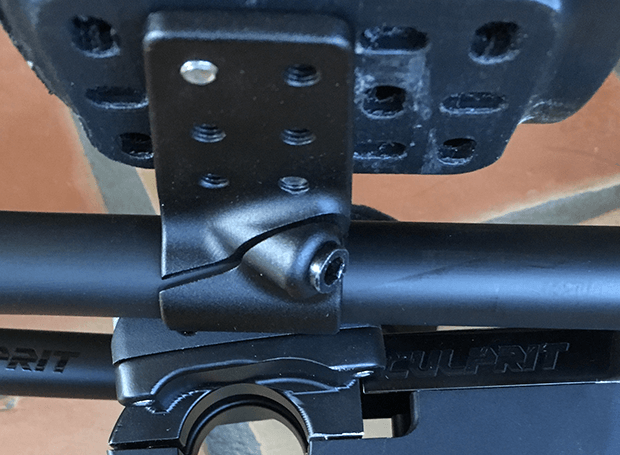
Looking from the underside of the bracket, you’ll see that tightening down the extension requires 1 bolt and it’s pretty easy and effective.
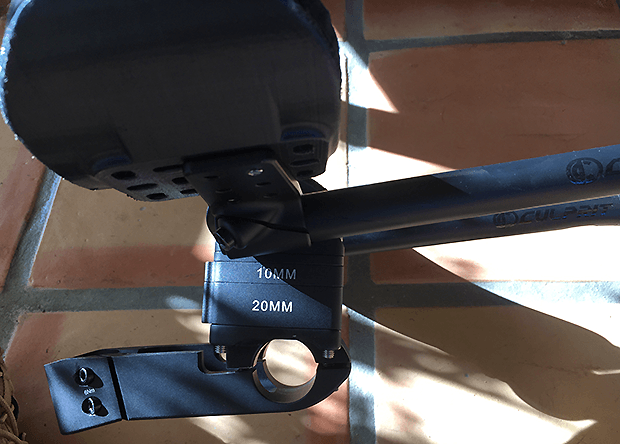
That same idea is used for tightening the stem onto the steer column, with bolts coming in at an angle, from the side, to pinch the stem against the steerer.
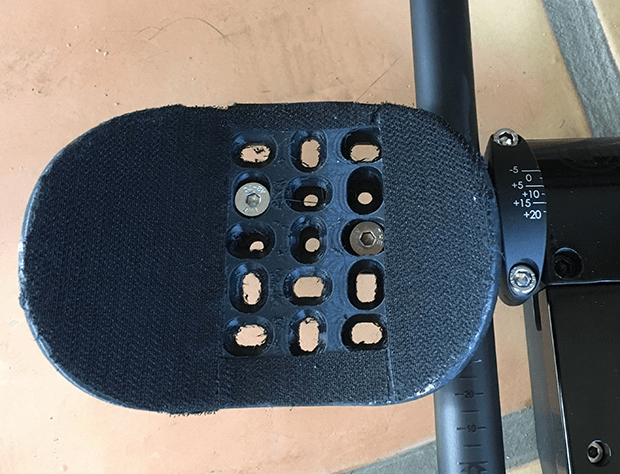
The armrest bracket has a lot of holes in it, following Profile Design’s large pad and bracket range.
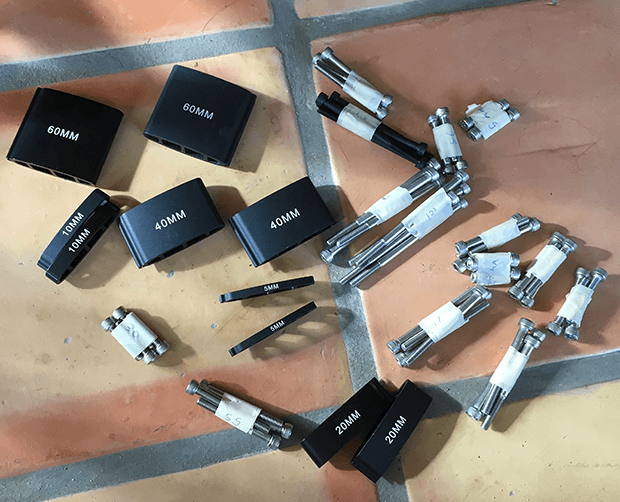
There’s a full suite of bolts and pedestals.
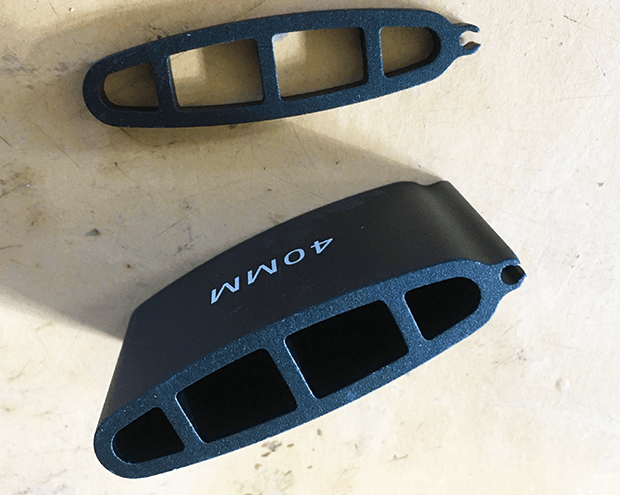
Here’s something that I’ve only seen Scott do, in its integrated aerobar design for the Plasma Premium: place in the trailing edge of the pedestal a place for the electronic shift wire to sit. Culprit actually does it a little better than Scott.
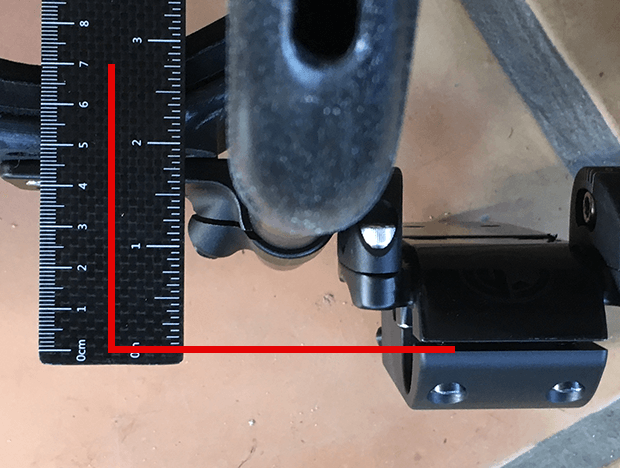
As I measure it, the lowest pad height available is between 65mm and 70mm above the centerline of the pursuit bar. That’s pretty typical. If you need a lower pad height, then you can’t use this bar. Otherwise, you’re good.
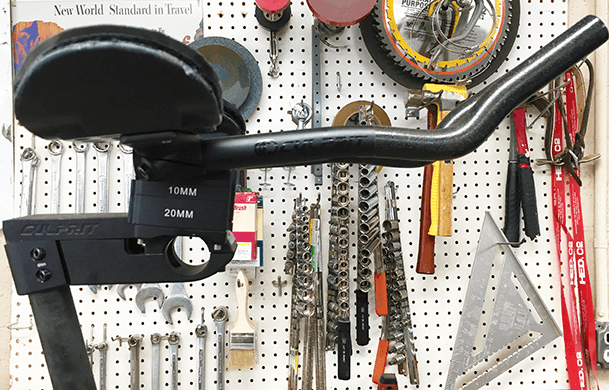
There’s a pair of extension shapes available. This is the wrist relief style of bend, my favorite. The stem appears built at a -17 degree angle, which is my preference, meaning the stem will be close to parallel to the horizon on just about every bike.
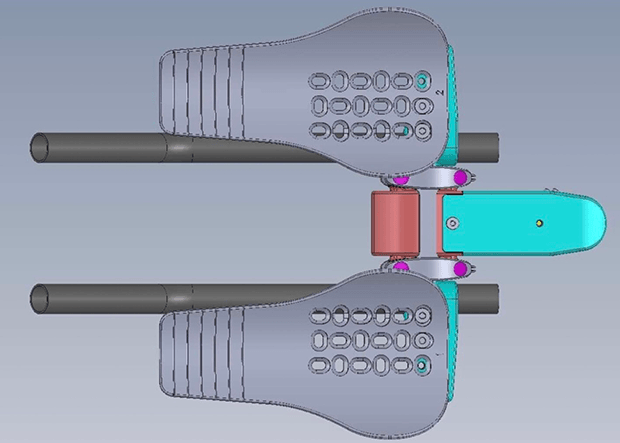
Here's the Indiegogo page to order this aerobar. Note also the new pad and pad bracket (drawing from Culprit above), following the theme of recent bars reviewed here, but I don't know whether this armrest will come standard on this aerobar. I'll defer to Josh and Culprit, who'll probably answer any questions in the comments below, and/or on our Reader Forum. There's also more description on the Culprit Bicycles website.


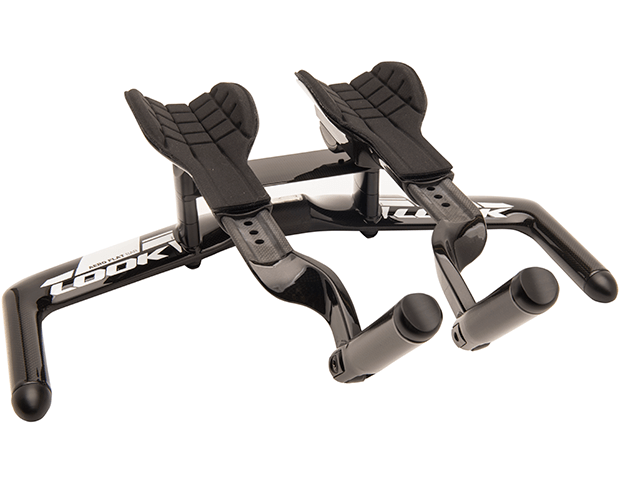
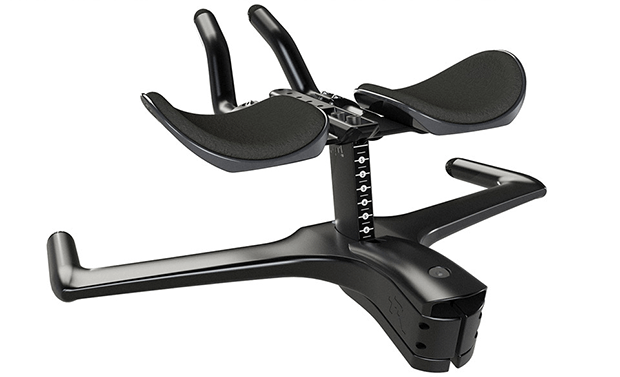
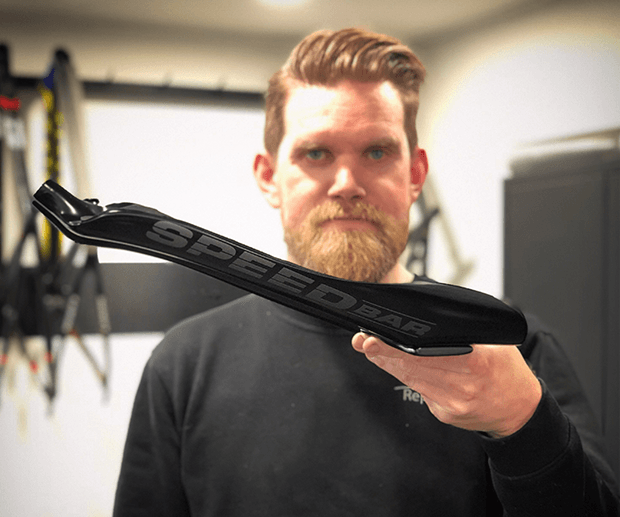
Start the discussion at slowtwitch.northend.network